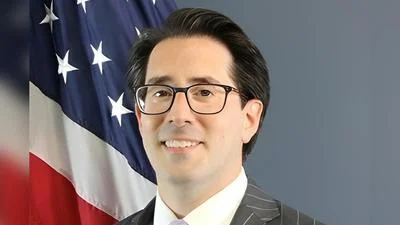The Department of Energy’s 32-billion-dollar budget proposal serves as a reminder of the broad range of defense, science, energy and environmental activities the agency pursues to perform its important national and energy security missions.
The breadth of DOE’s responsibilities is impressive, Mr. Secretary. DOE’s work, which is conducted here in D.C. and at national labs and field sites across the nation, includes maintenance of our nuclear weapons, support for international nonproliferation programs, and nuclear propulsion work for the U.S. Navy. It includes cleanup of Cold-War-era environmental contamination, and management and disposal of spent nuclear fuel and high-level radioactive waste.
DOE also supports cutting-edge, early-stage scientific research at our seventeen National Laboratories, including PNNL, which you and I visited in 2017, Mr. Secretary. It establishes efficiency standards for appliances and equipment, and conducts energy-related research, development, and demonstration across all forms of energy and technologies. It maintains the Strategic Petroleum Reserve and exercises authorities to respond to energy supply disruptions and maintain the resilience of our electric grid and pipeline systems. DOE also provides central energy data collection and analysis through the Energy Information Administration.
Managing this portfolio, as we all know, remains a challenge, which is why I believe it is so important to stay focused on DOE’s core missions.
During your time at the Department, this committee, on a bipartisan basis, has sought to ensure that you have adequate resources and the statutory authorities required to align, manage, and fund programs to cost-effectively execute DOE’s missions.
Today, I hope you can update the committee on the progress you have made modernizing the Department and the challenges and opportunities you see going forward.
Just a week ago, our Oversight Subcommittee examined DOE’s work to address environmental liabilities, and what can be done to accelerate cleanup and save taxpayers money. This is of particular interest to me, as you know, given the Hanford site sits across the Columbia river from my district. You and I saw firsthand the vast scope of the work that remains, and I would like to hear from you how you plan to accelerate cleanup.
Hanford, as with other major cleanup sites, initially provided for our nation’s defense needs. Over time it fostered technological and scientific capabilities that continue to benefit the nation on energy, environmental, and security matters. The Pacific Northwest National Laboratory was established as an R&D complex at Hanford for the Manhattan Project. Now it serves a broader range of missions for the nation.
This technological and innovative capability that now threads through the Department’s labs and field sites provides the tools for addressing future energy and security challenges.
You can see this in the tremendous advances in DOE’s supercomputing capabilities. Originally developed for weapons work, DOE supercomputers now promise tremendous advances across agency missions and national priorities, from carbon free fossil energy to helping to cure diseases. I am excited about the potential to utilize DOE’s advanced computing to support the next wave of American innovation.
When you testified before us last year, the committee had been moving legislation that would help DOE enhance our energy security, spread the strategic benefits of our nation’s energy revolution, and further our drive to reduce emissions.
For example, we worked to streamline the export of LNG and nuclear technology.
We sought to enable future innovations that would lead to a more reliable, modern electric grid.
We sought to increase DOE’s capabilities to prepare and respond to energy emergencies, including from extreme weather events.
We sought to ensure DOE is able to develop the infrastructure for advanced nuclear energy currently being pursued by companies such as NuScale out of Oregon.
I must say I am encourages by the work DOE is doing to support transformative breakthroughs in “carbon free" fossil energy, carbon capture technologies, advanced nuclear, energy efficiency, advanced energy storage technologies, and modeling for increased energy resilience, all to lower greenhouse gas emissions.
I would like to understand how DOE could more effectively support innovation, and how it can help bridge the gap between the lab and commercial deployment, while minimizing taxpayer risk. What can DOE do to attract and harness private capital to help accelerate deployment of future clean technologies?
I also look forward to learning about your priorities to enhance DOE’s capabilities to ensure the reliable delivery of power, given ongoing threats from bad actors.
Mr. Secretary, how we harness DOE’s capabilities to support future energy innovation, energy security, and the public interest given ongoing budget constraints, will continue to be our focus. I look forward to working with you on this.





